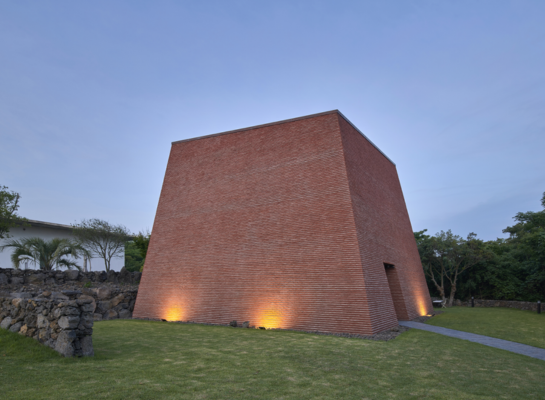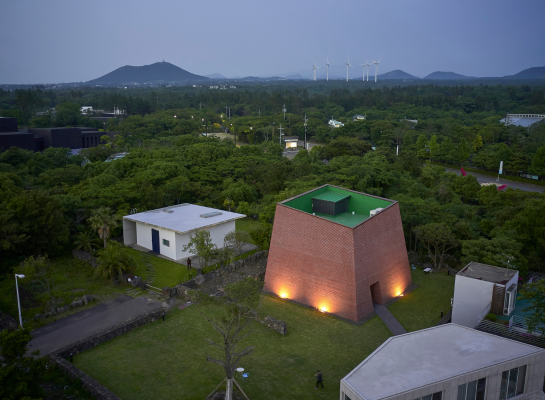Project in the spotlight: Gallery Daisy

Those in the know refer to Jeju Island as the Hawaii of South Korea. And it was with good reason that UNESCO recognised this volcanic island in the Yellow Sea – teeming with craters, waterfalls, and caves – as a World Heritage Site. That also makes it a huge draw for artists from all over the world. Among the dozens of galleries on the island, one stands out – Gallery Daisy – where Jihoon Jang collects modern art. To make that a reality, he commissioned the construction of an iconic pyramid built in red brick by Nelissen Bricks.
The spanish red bricks lend the gallery a fiery look that instantly grabs your attention. However, the architectural design is just as arresting. That’s because Jihoon Jang displays his showpieces in a ‘half-finished’ pyramid: ’The missing top makes the pyramid appear truncated. When you step through the iron entrance gate, the sense that you’ve entered a holy place or shrine grows. The gallery’s total absence of windows enhances the experience.’
‘Artists from all over the world want to exhibit their work in Gallery Daisy,’ says Jang. ’I also look at this as a crossroads for various cultures and art forms, and it was with that in mind that I started the pyramid.’

Natural look
‘Brick is one of the most natural materials,’ continues Jang. ’I found clay bricks in the Nelissen range with the exact look I had in mind when I came up with the idea. The quality of their hand-moulded bricks is exceptional, and they have a natural texture.’
South Korea produces bricks as well, but Jang felt they were less exclusive and eye-catching: ’At Nelissen, there’s a wide variety of colours to choose from. Spanish red had the vermillion I was looking for. For me, it symbolises the blush of sunrise on Jeju Island. The beige-grey pointing makes the gallery stand out against the landscape, transforming it into a shining landmark where culture can be sampled. And I’ve noticed that the red brick inspires Jeju’s other inhabitants, because you see more of them popping up all the time now.’
In the green
‘The mythical and somewhat mysterious building has an austere look,’ notes the artist. ’It’s precisely that austerity – the lack of frills – that allows the gallery to connect with its natural surroundings. The result is that the art is done far better justice than were it to be exhibited somewhere in the middle of a bustling city. Truth be told, the truncated pyramid building is a work of art in itself. The tens of thousands of bricks form a unified whole, without being bogged down by details. Consequently, that makes the architectural beauty of the gallery shine all the brighter.’
